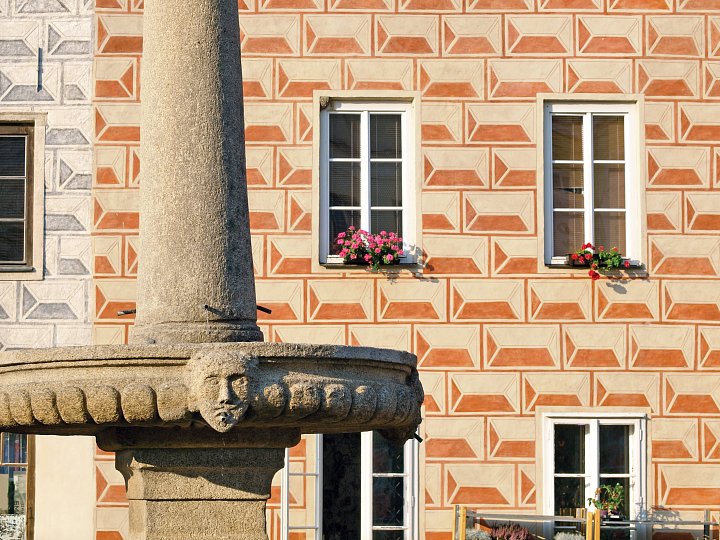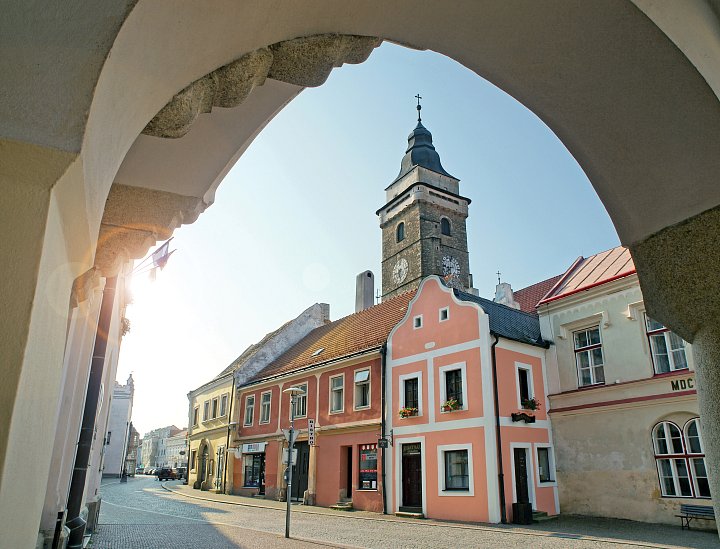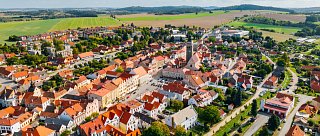Slavonice - a Renaissance collection of monuments
Slavonice boasts the title "Historic City of 2017"
The town came into life around the 12th century. The oldest written record of its existence dates from 1260. What was originally a mere hamlet turned later into a market town owned by the Lords of Hradec (the House of Vítkovec). The settlement gradually grew until it became a fortified town with a complex of underground passages, which are believed to have been built in the 13th century. These used to work both as drainage channels and fortification system. The town saw a number of major changes in the 14th century. Former circular fortified settlement expanded westwards into a spacious, slightly sloping market square (named “náměstí Míru” today) and, simultaneously, the town added another market located in a widened street in the east (today, “Horní náměstí” square). Both squares were bordered by medieval townhouses built on properties of stretched, long shapes with narrow yards whose rear parts were filled with barns and farming facilities.
Located between the two squares, the city tower dominates the church of the Assumption of Virgin Mary. The tower was erected in the place of the former church vestry between 1503 and 1549 by master Michal. The construction was greatly funded by the drapers’ guild and soon became a prominent landmark of the town. Its Baroque helmet-shaped roof replaced the previous one after it had been damaged by fire in 1750. The church of the Assumption of Virgin Mary is a three-nave basilica with two cross-vaulted fields and five-sided apse, whose construction commenced in the 1350s and continued until 1521. The central nave was finished with vault in the 15th century; the choir dates back to the 17th century and the Baroque chapels were added a century later.
Small houses sprang up along the side streets flanking the northern and southern edges of the town (streets named Jana Švermy and Boženy Němcové). At present, parts of the fortification system and two of the three original town gates can still be seen here. Many ponds were established in the late 15th century and later around Slavonice. The town was at its peak in the 16th century when all the houses located in both squares underwent complete renovations. Their exteriors and interiors have preserved until today. You still may see diamond vaults, facades equipped with typical gables derived from Italian Renaissance and a guild hall adorned with wall paintings. You should not miss the richly decorated sgraffiti (letter ones as well as complex figurative scenes). The year 1600 marked the end of construction boom in Slavonice and the town experienced truly hard times during the 30-year war. In 1575, there were 156 townhouses, 28 of which stood in the suburbs. After 1624, 73 of 164 houses were abandoned or burnt down. Moreover, the population of Slavonice was decimated by plaque in 1680-1681. It was not until the turn of the 17th and 18th centuries when the town overcame the consequences of war and subsequent hardships. Yet, not to a full extent. The fire of 27th March 1750 damaged 44 houses and a great part of both squares and the tower. In 1902, railway was built to connect Slavonice and Telč. In the 19th and 20th centuries, parts of the fortification were demolished and the old town hall was replaced with a new one. The sights and landmarks have been reconstructed since the late 1950s. Being so unique, the town was declared an urban heritage site reserve on 31st August 1961.
Many explorers simply choose Slavonice in order to be stunned by its sheer beauty and abundant evidence of ancestors’ skilfulness.
Additional information









